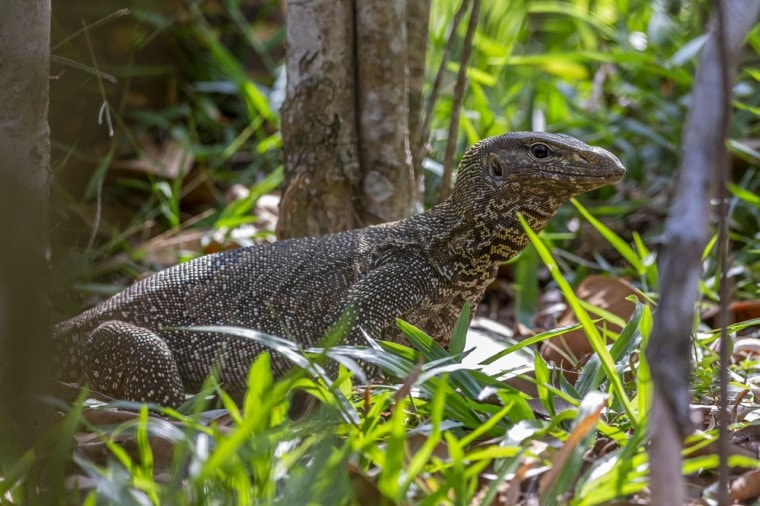
Are you thinking about buying a monitor lizard to keep as a pet, but wondering which species is right for you? There are around 80 recognized monitor lizard species in the world, and although only a handful of those species are commonly kept as pets, it can be difficult to narrow down which are the best fit for you and your home.
In this article, we will break down everything you need to know about monitor lizards and discuss the best pet monitor lizard species. We will also explore whether or not these reptiles are suitable pets.
About Monitor Lizards
Monitor lizards are generally large lizards that are native to Oceania, Asia, and Africa. They belong to the taxonomic family Varanidae and are thought to have originated around 90 years ago in Asia. The size of these lizards ranges vastly from species to species; the smallest monitor lizard species only grows to be about 8 inches long, but the largest monitor lizards can be several feet long. The Komodo Dragon, one of the most well-known examples of a monitor lizard, can be as long as 10 feet and weigh as much as 300 pounds.
As you can see, there is a lot of variation between different monitor lizard species, and they don’t all make ideal pets. Next, we will discuss some other things you should consider if you are thinking about bringing one of these lizards home.
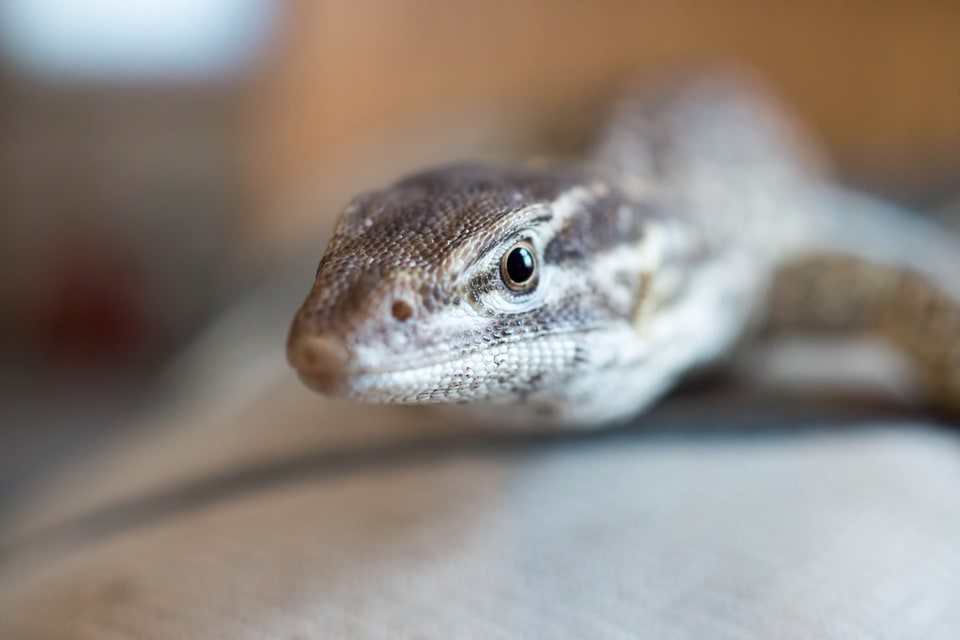
The 5 Best Pet Monitor Lizard Species:
1. Ackie Monitor Lizard
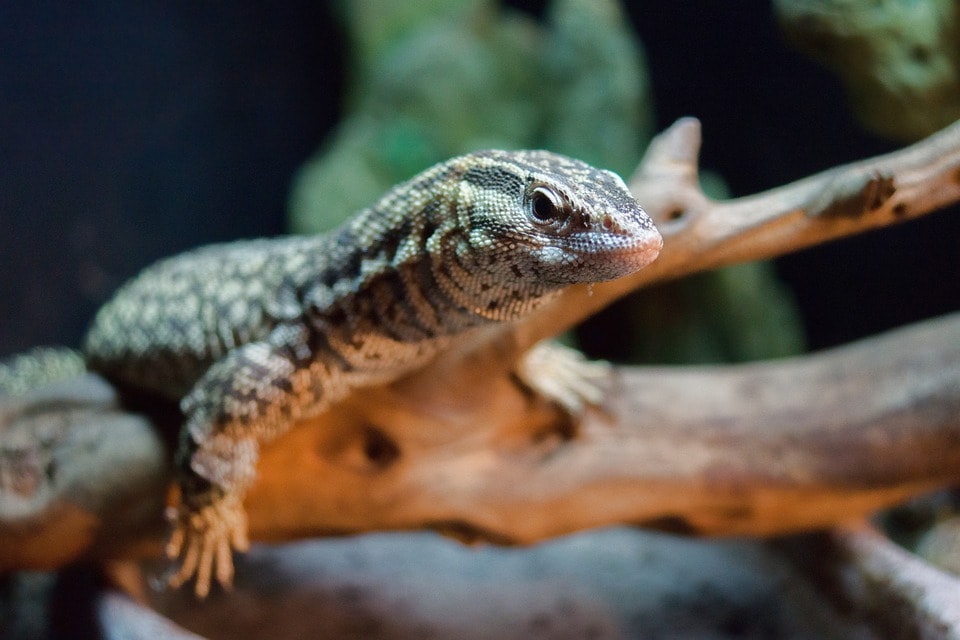
| Length: | 16”–18” |
| Weight: | 5–12 pounds |
| Lifespan: | 15–20 years |
| Average Cost: | $100–$200 |
| Minimum Enclosure Size: | 4’ x 2’ x 2’ |
Ackie monitors are ideal pets for first-time monitor owners. As you can see, they are one of the smallest species of monitor lizard, making them a lot more manageable than some of their relatives. Ackies are also known as ridged-tail monitors and originated in Australia. Since their natural habitat is the desert, they require moderate humidity, UV lighting, and a basking area that provides heat up to 150ºF. They like to dig and need plenty of opportunities for climbing and hiding in their enclosures. In terms of their diet, they need to eat primarily insects such as crickets, mealworms, or roaches.
2. Timor Monitor Lizard
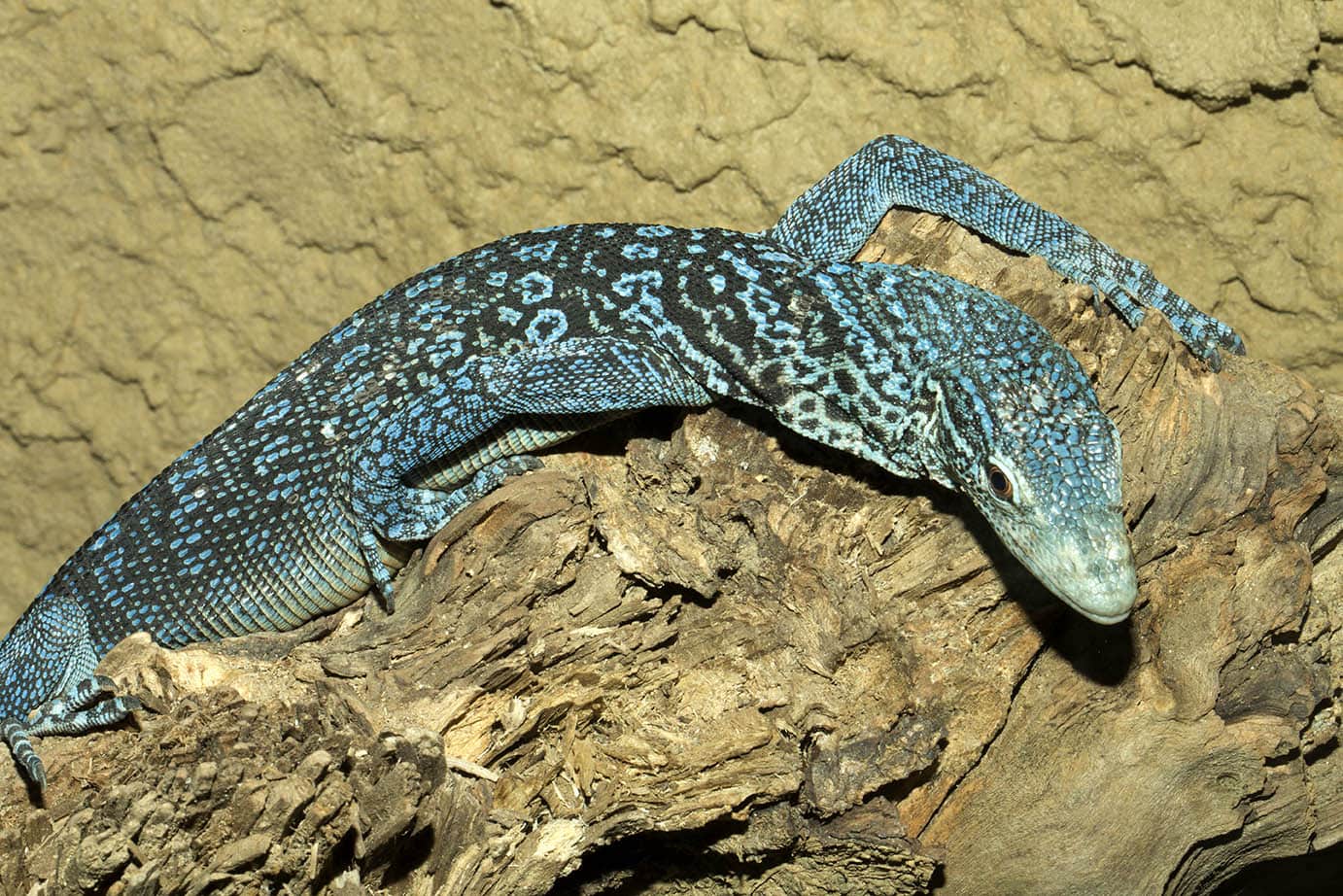
| Length: | 14”–20” |
| Weight: | 3.5–12 pounds |
| Lifespan: | 10 years |
| Average Cost: | $150–$200 |
| Minimum Enclosure Size: | 4’ x 2’ x 6’ |
Timor monitors are relatively rare in captivity, but they can make wonderful pets. They are natives of the island of Timor and require a tropical habitat. Their basking temperature is lower than that of other monitor lizards at 120ºF; however, they need an environment that is much more humid at 80%. Maintaining the humidity in your Timor’s enclosure will require a bit of maintenance, especially if you manually mist the enclosure multiple times a day instead of investing in an automatic misting system.
Like the Ackie monitor, they are small lizards, which makes them manageable. These lizards are more difficult to find than Ackies and a little bit more expensive. They are also very shy and will be stressed if they are not given ample opportunities to hide. You should feed your Timor a diet of insects; you can offer it a mouse every so often as a treat.
3. Savannah Monitor Lizard
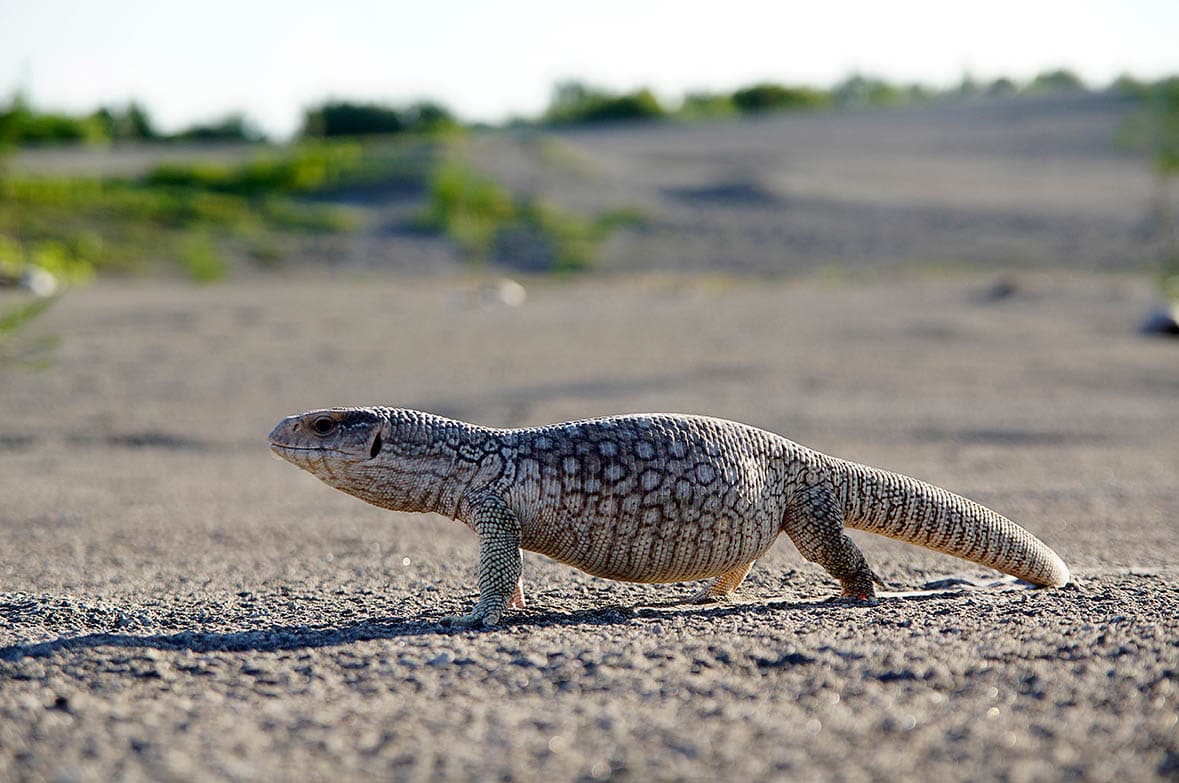
| Length: | 3.5’–5’ |
| Weight: | 11–13 pounds |
| Lifespan: | 15–20 years |
| Average Cost: | $25–$100 |
| Minimum Enclosure Size: | 8’ x 4’ x 4’ |
Savannah monitors are native to the savannas of Africa—hence their name. Although they are larger than the first two lizards on our list, savannah monitors are one of the most popular pet monitor lizard species because of their mild temperament. They are also easier to find than some other monitor lizard species. Savannah monitors are made for digging and will need an enclosure that gives them the opportunity to do so. These lizards eat some insects, but their diet primarily consists of mollusks.
4. Dumeril’s Monitor Lizard

| Length: | 3’–5’ |
| Weight: | 110 pounds |
| Lifespan: | 8–10 years |
| Average Cost: | $250–$350 |
| Minimum Enclosure Size: | 10’ x 4’ x 4’ |
Dumeril’s monitors are the largest monitor lizards on this list. At 5 feet long and over 100 pounds, it probably isn’t too surprising that these lizards require a large enclosure. The bigger the enclosure, the better, though it should be at least twice your Dumeril’s monitor’s length. A lot of people don’t have space for an animal as big as the Dumeril’s monitor (or the Asian water monitor, next on our list), but they are popular among reptile enthusiasts. When you are creating the enclosure, you should keep in mind that Dumeril’s monitors are native to Southeast Asia and need a very warm, very humid environment. The humidity of the enclosure should be kept at around 80% with a basking temperature of 80–120ºF. In terms of diet, Dumeril’s in the wild primarily eat crabs; pet Dumeril’s, however, typically eat rats and mice as well as various insects.
5. Asian Water Monitor Lizard
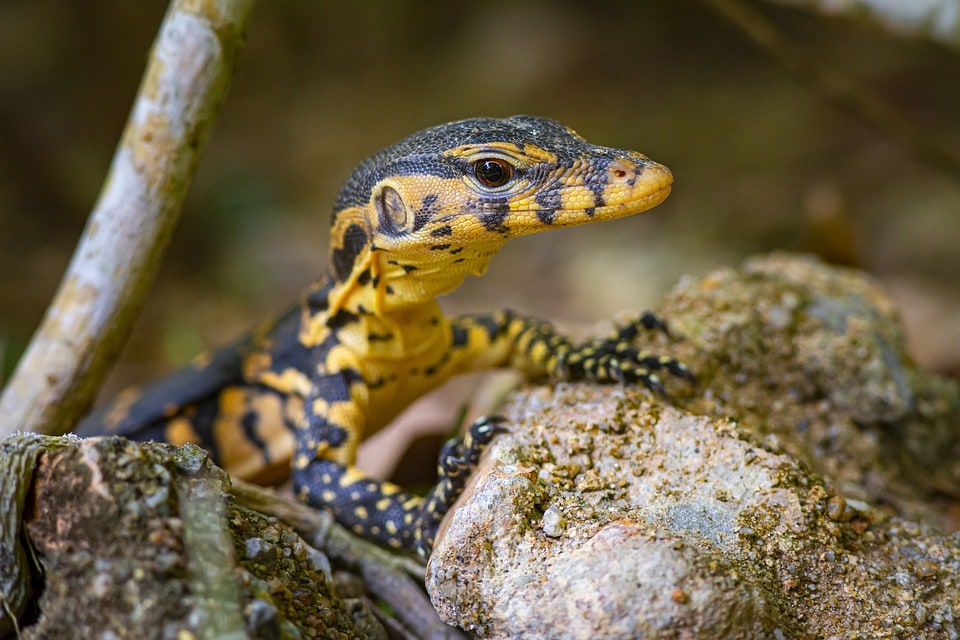
| Length: | 4’–6’ |
| Weight: | 20–60 pounds |
| Lifespan: | 11–25 years |
| Average Cost: | From $300 |
| Minimum Enclosure Size: | 10’ x 4’ x 4’ |
Asian water monitors are common in the wetlands of Asia. These creatures are a popular monitor lizard species that grow to be quite large at up to 6 feet long and 60 pounds. As you might guess, these lizards require a pool in their enclosures. Keeping your Asian water monitor’s pool water clean will require more maintenance than other monitor lizard species as the water gets dirty quickly. Since Asian water monitors are opportunistic carnivores, they can eat a wide variety of foods, but they will likely do best on a diet of insects, mice, or mollusks.
Do Monitor Lizards Make Good Pets?
While monitor lizards can make suitable pets for some, they are not for everyone. You should have at least some experience with reptiles before you buy one of these animals. Though you may not think of lizards as being high-maintenance, caring for pet monitor lizards takes a lot of time and money. Moreover, they are carnivores that are large enough to be able to inflict harm on humans.
If you’re still up for the task of caring for one of these unique creatures, there are a few other things you should keep in mind. First, monitor lizards generally need a lot of space.
They like to dig, swim, and climb in their natural habitat, so an enclosure that features opportunities for these activities is ideal. If you live in an apartment or otherwise don’t have very much outdoor space, these animals likely won’t be able to thrive in your home, no matter how nice their enclosure is.
In addition to their space needs, monitor lizards themselves tend to be very large animals, which can present challenges if you need to transport your monitor for any reason. If you enjoy traveling, you may have a hard time finding a pet sitter who is comfortable spending time with a lizard the monitor’s size.
Finally, finding a monitor lizard will not be easy; they are not the type of animal you will find in your local pet store. In fact, most monitors aren’t very common in captivity, which means you would probably need to go the extra mile to find a breeder. Even once you find a breeder, you may find yourself waiting a very long time before you actually get your monitor lizard.
Now that we’ve discussed some of the challenges of owning a monitor lizard, let’s discuss some of the most ideal pet monitor species.
Summary
Pet monitor lizards certainly are not for everyone. They can be very large creatures that require large, dynamic, and highly controlled enclosures. If you are not experienced with reptiles, some monitor species can be dangerous. Although monitor lizards are sometimes kept as pets, they are still wild animals and should be treated as such. However, for the right person, monitor lizards can make ideal pets. With long lifespans that range up to 25 years, these are long-term pets whose companionship can be rewarding for owners who can provide them with the living space they need.
SEE ALSO:
- 21 Best Pet Lizards for Beginners
- Ackie Monitors for Sale: Breeders List in USA (Breeders List and Tips)
Featured Image Credit: Pixabay









